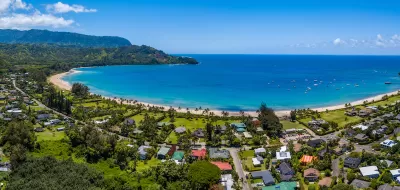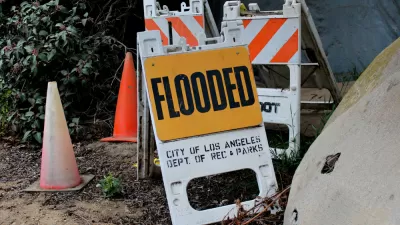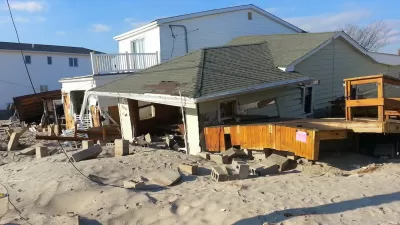The county requires builders to assess potential flood risks using models that account for sea level rise projected as far out as 2100.

In a piece for Smart Cities Dive, Ysabelle Kempe describes one Hawai’i county’s efforts to build resilience in the face of climate impacts.
Last year, Kaua’i County “made a paradigm shift in how it protects private property from rising seas driven by climate change” by requiring new and ‘substantially renovated’ buildings to withstand levels of flooding predicted for the year 2100. “The rules made the county one of the first in the nation to ‘commit to using scientific model projections as the basis for construction and planning regulations,’ according to the [University of Hawai’i].”
Based on the new rules, “Residential buildings are required to be elevated 2 feet above the highest sea-level rise flood elevation, while nonresidential structures are required to be elevated 1 foot above that level.” According to Kempe, “the rules also aim to save taxpayer dollars on costly flood-control projects and ensure that those who live in risky areas take responsibility for their actions.”
The county created a “Sea Level Rise Constraint District Viewer” tool that maps predicted sea level rise. “The county also developed an app that allows people to generate a PDF report showing whether a proposed structure is subject to the rules and the maximum flood depth it is exposed to.”
Alan Clinton, administrative planning officer at Kaua’i County, says the ordinance is a “workable” middle-ground solution, but doesn’t address other concerns from local residents.
FULL STORY: Bracing for rising seas, a Hawai’i county makes builders prep for year 2100

Study: Maui’s Plan to Convert Vacation Rentals to Long-Term Housing Could Cause Nearly $1 Billion Economic Loss
The plan would reduce visitor accommodation by 25,% resulting in 1,900 jobs lost.

North Texas Transit Leaders Tout Benefits of TOD for Growing Region
At a summit focused on transit-oriented development, policymakers discussed how North Texas’ expanded light rail system can serve as a tool for economic growth.

Why Should We Subsidize Public Transportation?
Many public transit agencies face financial stress due to rising costs, declining fare revenue, and declining subsidies. Transit advocates must provide a strong business case for increasing public transit funding.

How to Make US Trains Faster
Changes to boarding platforms and a switch to electric trains could improve U.S. passenger rail service without the added cost of high-speed rail.

Columbia’s Revitalized ‘Loop’ Is a Hub for Local Entrepreneurs
A focus on small businesses is helping a commercial corridor in Columbia, Missouri thrive.

Invasive Insect Threatens Minnesota’s Ash Forests
The Emerald Ash Borer is a rapidly spreading invasive pest threatening Minnesota’s ash trees, and homeowners are encouraged to plant diverse replacement species, avoid moving ash firewood, and monitor for signs of infestation.
Urban Design for Planners 1: Software Tools
This six-course series explores essential urban design concepts using open source software and equips planners with the tools they need to participate fully in the urban design process.
Planning for Universal Design
Learn the tools for implementing Universal Design in planning regulations.
City of Santa Clarita
Ascent Environmental
Institute for Housing and Urban Development Studies (IHS)
City of Grandview
Harvard GSD Executive Education
Toledo-Lucas County Plan Commissions
Salt Lake City
NYU Wagner Graduate School of Public Service





























